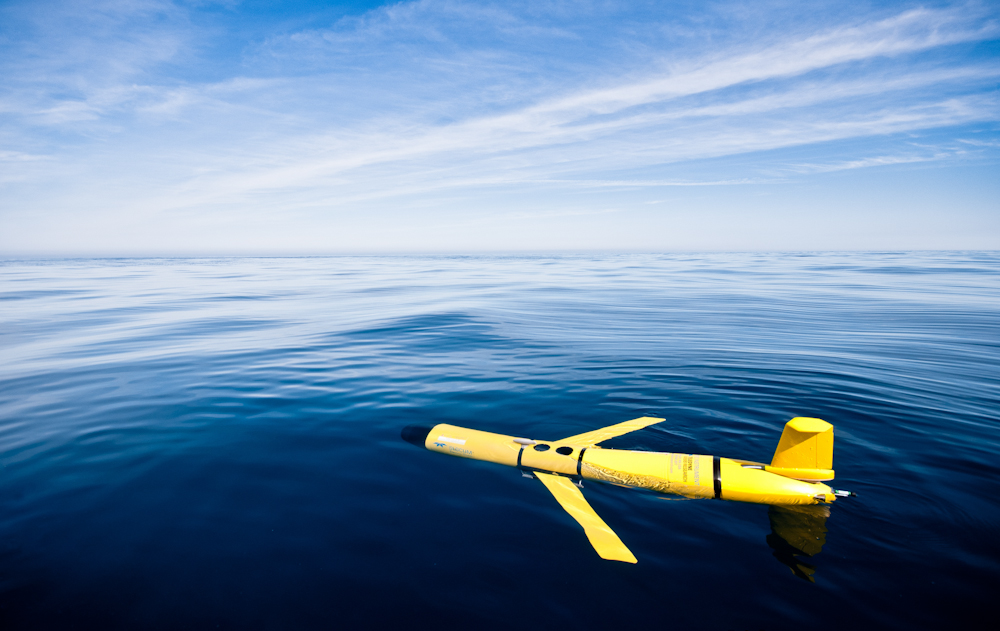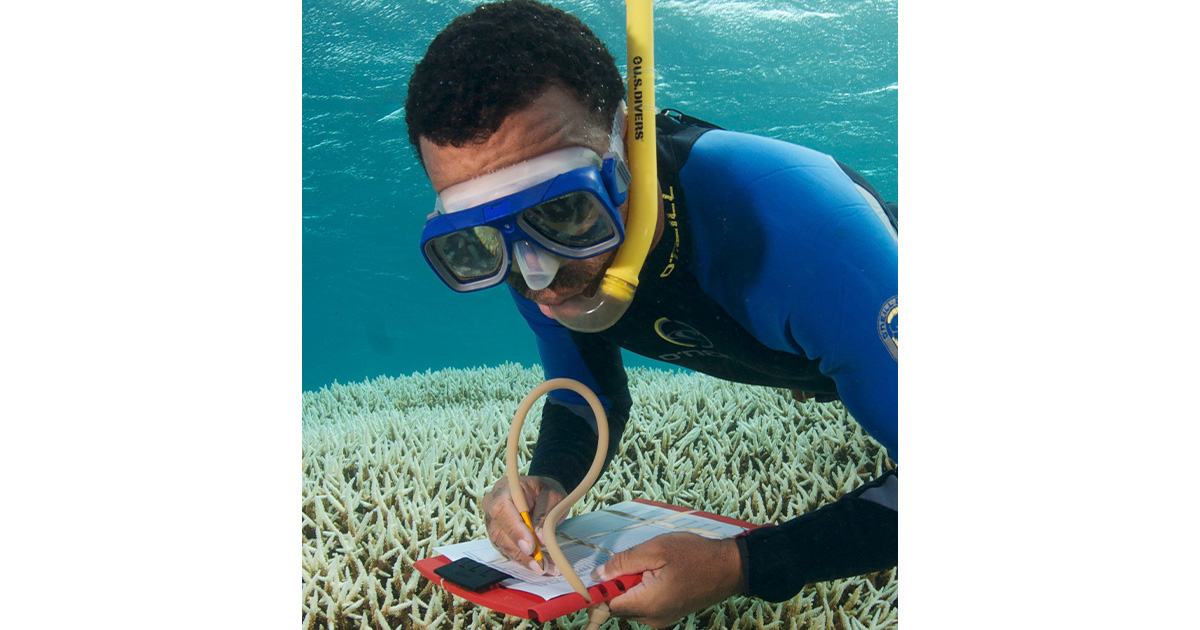Our ocean is estimated to be home to somewhere between half and a staggering 10 million marine species.
The wide range in these numbers illustrates the significant gaps that still exist in our knowledge of the state of marine life, from coral reefs to the deep sea bottom. But now, nations have a new opportunity to work together in filling them in for the benefit of humanity.
Growing up surrounded by Kenyan wildlife, David Obura always knew he was going to be a wildlife biologist. Having spent his early years snorkeling along the coast of his homeland and witnessing the deteriorating effects of varied human pressures on coral reefs firsthand, he decided to dedicate his career to protecting these vital ecosystems.
"In 1998, there was a massive coral bleaching event that affected all Western Indian Ocean reefs and many regions around the world. Back then, I had just started working on coral reef health and monitoring. The impacts of that bleaching event took over my career, and I started to focus on the effects of rising sea temperatures on coral reef ecosystems," remembers David Obura. Today he is the founding director of CORDIO East Africa - an organization that specializes in generating knowledge to find solutions that benefit marine ecosystems and people.
A quarter of the world's fish resources, as well as millions of livelihoods, depend on healthy coral reefs. However, these tropical forests of the ocean have become a flagship ecosystem to illustrate the immense impact climate change is causing on marine biodiversity around the world. As rising sea temperatures and increasing acidity are threatening to destroy more than 90% of the world's coral reefs, scientists rely on ocean observations to monitor changes and enable action.
"The pressures on our planet are increasing, and rising carbon dioxide levels are only one symptom of that. The problem is people think the ocean is too big to be impacted. But the huge value of data coming from ocean observing is that it actually shows a clear effect these pressures are having on the ecosystems that support life on Earth," says David Obura.
Although there is plenty of data that bears testimony of the deteriorating state of marine ecosystems, such as coral reefs, a lot still remains to find out. "There are important data gaps, especially in remote areas and developing countries with a lot of remote coastlines and not enough resources to support ocean observations," Obura clarifies. "There is assistance from abroad, but we really need to improve national capacities. And we could actually do a lot better with the data we already have, but we are not making the right decisions."
A chance to take a step in the right direction
The United Nations Biodiversity Conference, also known as the COP15 of the Convention on Biological Diversity (CBD), poses a key opportunity for nations to take a step in the right direction in order to preserve the invaluable array of life underwater. "We need to learn from what is happening with our coral reefs. I hope countries will see that even though they may not agree with each other on some details, they can cooperate for common goals," says Obura, who will deliver a keynote speech at the Conference's official ocean-themed event on 16 December, organized by the Intergovernmental Oceanographic Commission of UNESCO (IOC/UNESCO) and an important moment in the UN Ocean Decade.
One of the outcomes which experts like David hope to see from this UN Biodiversity Conference is collaboration between nations in creating a technical working group on ocean observation for the CBD post-2020 Global Biodiversity Framework. The IOC/UNESCO and its Global Ocean Observing System program can strongly support this process.
Since 2012, the Global Ocean Observing System has been working to coordinate the delivery of ocean data around 12 internationally agreed biological Essential Ocean Variables, or key measurements to describe the state of marine biodiversity, from microbes to fish and marine mammals. This system and the international expertise it brings together are ready to assist nations in delivering on the post-2020 Global Biodiversity Framework.
Obura is a member of the Global Ocean Observing System's Biology and Ecosystems Panel, which has been working on building global marine biodiversity monitoring networks that would help nations monitor their progress toward biodiversity targets. "Data is much more useful when it's combined. Having the monitoring networks and then embedding those in a global system that allows data sharing and collaboration is really critical now," he says.
Unexplored deep-sea ecosystems and new revolutionary technologies

A coral photographed during an expedition studying remote deep-sea ecosystems. (Photo credit: CSSF/ROPOS/Metaxas)
Today's technological advances also have the potential to revolutionize marine biodiversity observations. "The new opportunity on the block, which is just starting to take off now, is environmental DNA - or eDNA - and that shows promise," says Paul Snelgrove, associate scientific director at Ocean Frontiers Institute and another key speaker at the upcoming ocean-themed event at the UN Biodiversity Conference. In contrast to colorful coral reefs, which are the research subject of David Obura, Paul Snelgrove focuses on very little explored deep-sea ecosystems.
"We now know the deep sea is extraordinarily species-rich, to the surprise of ecologists in the 1960s who had previously thought it was a relatively species-poor environment. In addition, it is by far the most pervasive and undersampled ecosystem on the planet," notes Snelgrove.
Deepwater corals and sponges have been the main research objects of many deep sea conservation efforts until now. "Those are very important and absolutely a good place to start, but we don't have a sense of what all the other deep-sea species do and what their loss could mean," says Paul Snelgrove.
As pressures on the deep sea increase, together with a growing interest in deep-sea mining, this knowledge becomes increasingly important. "The question is, how destructive will that mining be and what is the risk in terms of biodiversity? This comes back to the point that we don't have a good sense of what's down there and how quickly it is changing in space and in time," adds Snelgrove.
One of the main reasons why these vast ecosystems are so poorly known are the tremendously challenging logistics of deep-sea research. These areas are not only remote but also involve extremely high pressure, which research equipment must withstand. "We need very expensive ships and equipment to access these environments, so it makes research very challenging," says Paul Snelgrove. "But some transformative new technologies, such as the eDNA I noted earlier, coupled with autonomous underwater vehicles, have the potential to change this."
 An autonomous underwater vehicle, or ocean glider, at surface. (Photo credit: SOCIB)
An autonomous underwater vehicle, or ocean glider, at surface. (Photo credit: SOCIB)
Autonomous underwater vehicles, or ocean gliders, are miniature vessels that independently roam the ocean and collect data using various sensors. The eDNA sensors would have an immense potential to increase the sheer amount of data on marine biodiversity by detecting genetic material of different organisms in the water. "The current concept is to take water samples and identify the different types of life in it based on DNA. But having said that, today we still don't have the 'phone book' - the corresponding scientific names of all those genetic IDs - to actually put a species name on them," clarifies Snelgrove.
As technology rapidly advances, a real data revolution is right around the corner. Collaboration between nations to improve the data and access to it will be key to monitor progress toward biodiversity targets in the CBD post-2020 Global Biodiversity Framework. A technical working group on ocean observation would be the first big step, and the Global Ocean Observing System is keen to help nations through coordination, capacity development, and growing the use of effective observing methods.
"Knowledge is power. It is what helps us make wise decisions," affirms Paul Snelgrove. Let's hope that the United Nations Biodiversity Conference, from 7 to 19 December, will help nations unite in order to improve our global knowledge on marine biodiversity and move to science-based decision making. We must observe the ocean as if life depends on it—because after all, it really does.





